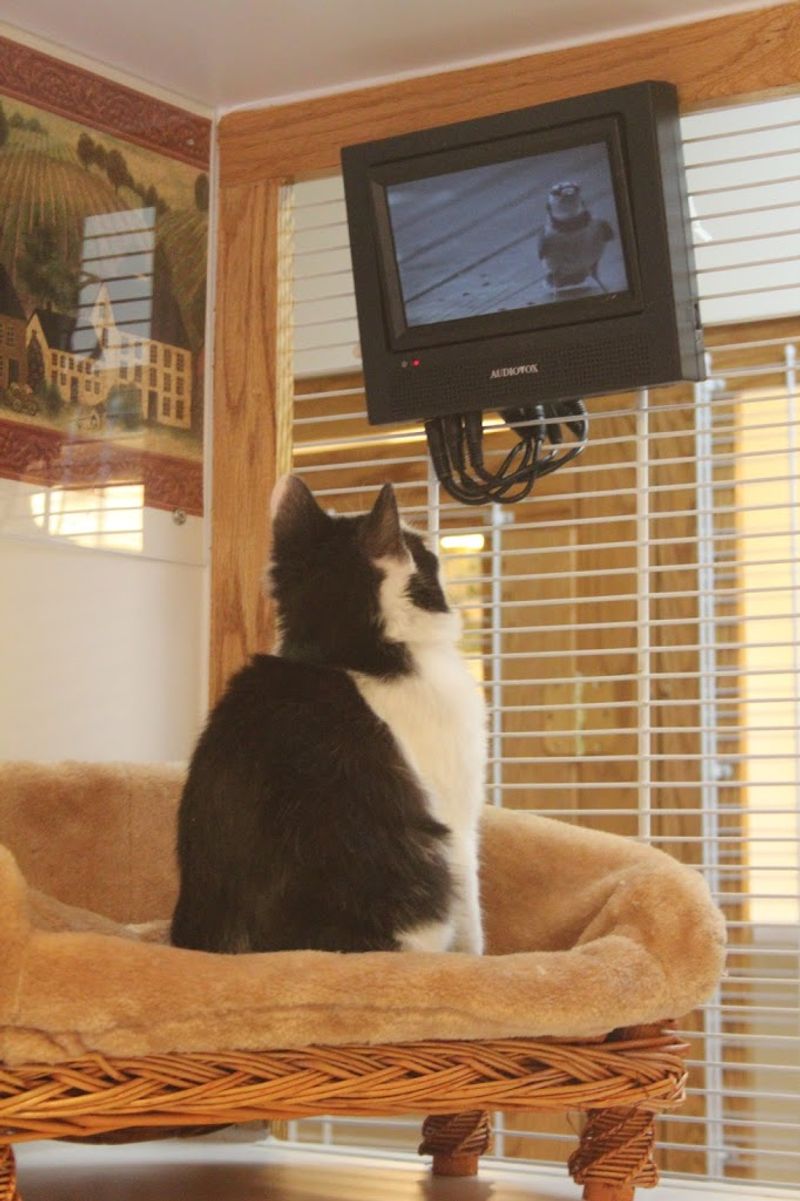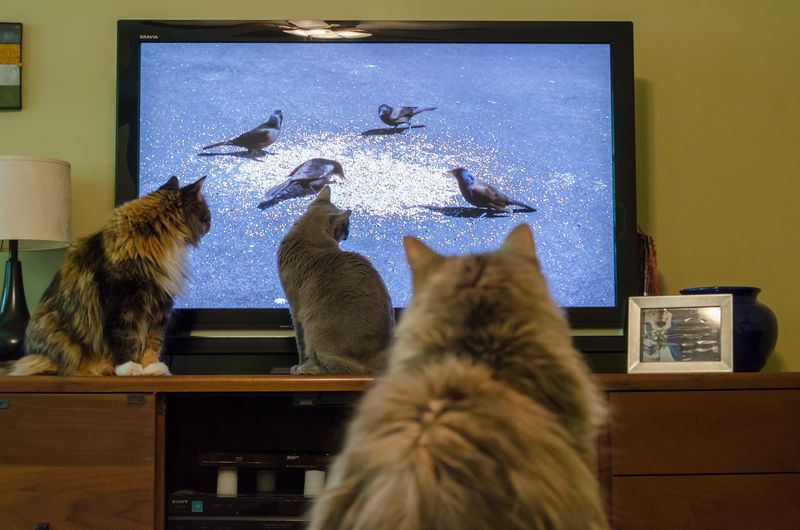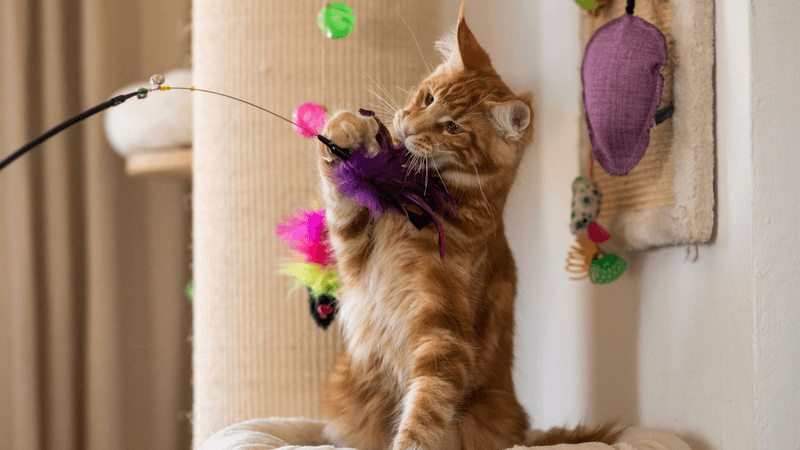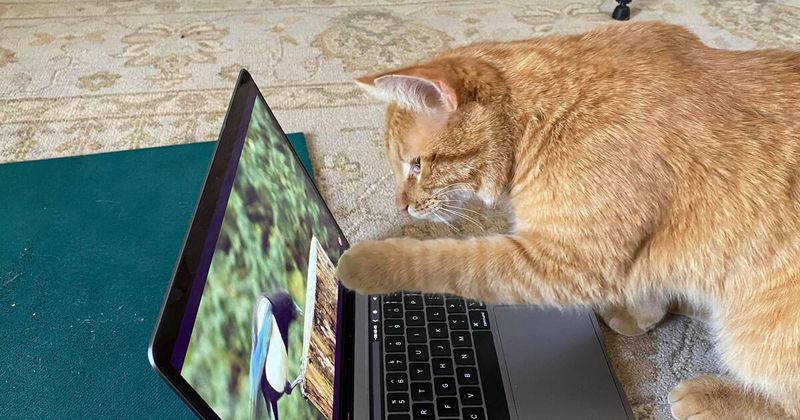📖 Table of Content:
In a world where technology isn’t just for humans anymore, even our feline companions are catching glimpses of the digital age. “Cat TV,” a growing trend among pet owners, offers cats a captivating window into a world of birds, squirrels, fish, and fluttering insects — all from the safety of the living room. But as with all forms of screen time, a balance must be struck to ensure your cat is being entertained without becoming overstimulated or overly dependent on passive activity.
While “Cat TV” can be a wonderful enrichment tool, it’s not meant to replace real-world play or physical interaction. Cats need a mixture of sensory stimulation, movement, and rest, and screen time can play a healthy role if used thoughtfully. Integrating this digital form of engagement into your cat’s routine should be done gradually, with care and observation, to ensure it enhances their environment rather than disrupts it.
Whether you’ve got a high-energy kitten or a laid-back senior cat, these 8 strategies will help you introduce “Cat TV” in a way that feels natural, beneficial, and fun. By building screen time into a broader enrichment plan, you’ll foster a happier, healthier, and more engaged feline companion — all while avoiding the common pitfalls of too much couch time.
1. Start With Short Viewing Sessions
Introducing “Cat TV” gradually is key to ensuring a positive experience. Don’t expect your cat to sit through an hour of digital birds right off the bat — their attention spans and interest levels vary. Try playing short clips of 5 to 10 minutes to see how they respond. If they show interest, you can slowly increase the time over a few days. Some cats may prefer certain types of content, so experiment early to find what works. Avoid forcing the experience — it should be engaging, not overwhelming. Over time, you’ll develop a sense for how long your cat is willing to “watch.”
2. Choose High-Quality, Cat-Specific Content
Selecting the right type of video makes a big difference in capturing your cat’s attention. Opt for content designed specifically for feline viewers — typically videos featuring birds, fish, mice, or bugs moving against natural backdrops. These visual elements mimic prey and trigger your cat’s hunting instincts. Avoid chaotic or fast-cut scenes, which can confuse or stress them out. Many streaming platforms and YouTube channels offer free “cat TV” playlists. Look for slow, natural movement paired with real animal sounds, not music or voiceovers. That realism is what truly piques feline curiosity.
3. Create a Cozy Viewing Spot
Designing a dedicated space can elevate your cat’s screen-watching enjoyment. Consider placing a soft blanket, cat bed, or window hammock in front of the TV or tablet screen. If your cat loves elevated spaces, a perch or cat tree nearby works wonders. Keep the lighting natural and the volume low to maintain a soothing environment. This makes the screen experience more immersive without being too intense. The more comfortable the spot, the longer your cat may stay engaged. Over time, they may begin to associate that cozy nook with relaxing entertainment.
4. Keep Screen Time Limited
Moderation is vital when incorporating technology into your pet’s life. Leaving videos running all day may dull the novelty and lead to overstimulation or screen dependency. Aim for short, focused sessions — ideally 15 to 30 minutes once or twice a day. Quality over quantity applies here: keep it fresh, short, and engaging. Cats, like people, need downtime from screens too. Use breaks to encourage other activities like sunbathing, stretching, or interacting with you. By being intentional about duration, you’ll keep screen time special and beneficial.
5. Mix In Interactive Play
Blending passive and active stimulation creates a well-rounded enrichment routine. Don’t rely solely on digital visuals to keep your cat mentally engaged — incorporate physical play as well. Use toys that encourage chasing, pouncing, and stalking behaviors, like feather wands or motorized mice. You can even create simple DIY games with paper bags or cardboard boxes. Alternating between screen sessions and real-world play builds physical agility and reduces boredom. These tactile experiences satisfy different instincts than visual ones. Think of screen time as a supplement, not a replacement.
6. Monitor Their Reactions
Staying observant during and after “Cat TV” sessions helps you read your pet’s needs. Look for body language cues like flattened ears, twitching tails, or pacing — these may indicate stress or overstimulation. Not all cats enjoy visual stimulation, and that’s perfectly okay. Some may lose interest quickly, while others could become overly focused or even frustrated. If your cat starts attacking the screen or vocalizing excessively, it might be time to take a break. Being tuned in to these signs lets you adjust the content or timing. As always, every cat is different.
7. Rotate Content for Variety
Keeping things fresh will maintain long-term interest in screen time. Just like humans, cats can grow bored with the same repetitive visuals. Try switching up the themes — fish tank scenes one day, bird feeders the next, maybe even squirrels or butterflies. Some cats even enjoy slow-motion nature documentaries. Look for new content weekly or bookmark a variety of favorites to rotate through. This helps prevent habituation and keeps their minds stimulated. As your cat’s preferences evolve, so can their viewing library.







